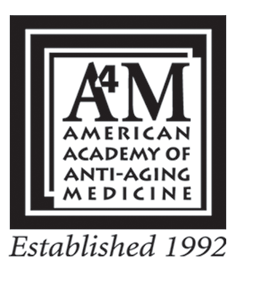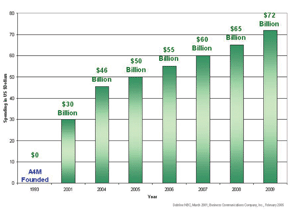|
[home] [subscription form] [cover story] [introduction] [people and places] [medical spa destinations]
|
||

Key Considerations for Opening and Maintaining a
Successful Anti-Aging Clinic: an A to Z Checklist
By Robert M. Goldman, M.D., Ph.D., D.O., FAASP and Ronald M. Klatz, M.D., D.O.
Robert M. Goldman, M.D., Ph.D., D.O., FAASP and Ronald M. Klatz, M.D., D.O. are the physician co-founders of the anti-aging medical movement and serve as Chairman and President, respectively, of the American Academy of Anti-Aging Medicine (A4M; Chicago, IL USA; www.worldhealth.net), a non-profit medical organization dedicated to the advancement of technology to detect, prevent, and treat aging related disease and to promote research into methods to retard and optimize the human aging process. Visit the A4M's World Health Network website, at www.worldhealth.net, to learn more about the organization and its educational endeavors.
Introduction
The elderly population in the US will double in size over the next quarter-century, as Baby Boomers reach retirement age. Eight in ten Americans will be age 65 or over by the year 2025. Today, Boomers now represent 28% of the U.S. population and are the largest single sustained growth of the population in the history of the United States. Their mass alone has had an enormous impact on the national psyche, political arena and social fabric. By many measures, the Baby Boomer generation has redefined every life-cycle stage as they pass through it. In the 1960s and 1970s, they created a youth culture of rock n' rollers and hippies, who grew up to become the young urban professionals of the 1980s.
As a group, today's fifty-somethings control 70% of the wealth in the U.S., own 77% of the financial assets, represent 66% of stockholders, and own 80% of the money in savings and loans. As the oldest of the Baby Boomers approaches later adulthood, they are again poised to redefine the next life stage – retirement. The Baby Boomers embody a seemingly universal yearn to retain their lean and mean mental and physical stature, and with each birthday they celebrate they push anti-aging health care to the forefront of clinical medicine.
 With the founding of the American Academy of Anti-Aging Medicine (A4M; www.worldhealth.net) in 1992, the A4M created the anti-aging medical movement. Anti-aging medicine is the fastest-growing medical specialty throughout the world and is founded on the application of advanced scientific and medical technologies for the early detection, prevention, treatment, and reversal of age-related dysfunction, disorders, and diseases. It is a healthcare model promoting innovative science and research to prolong the healthy lifespan in humans. As such, anti-aging medicine is based on principles of sound and responsible medical care that are consistent with those applied in other preventive health specialties. The phrase "anti-aging" is, as such, a euphemism for the application of advanced biomedical technologies focused on the early detection, prevention, and treatment of aging-related disease. The goal of anti-aging medicine is not to merely prolong the total years of an individual's life, but to ensure that those years are enjoyed in a productive and vital fashion.
With the founding of the American Academy of Anti-Aging Medicine (A4M; www.worldhealth.net) in 1992, the A4M created the anti-aging medical movement. Anti-aging medicine is the fastest-growing medical specialty throughout the world and is founded on the application of advanced scientific and medical technologies for the early detection, prevention, treatment, and reversal of age-related dysfunction, disorders, and diseases. It is a healthcare model promoting innovative science and research to prolong the healthy lifespan in humans. As such, anti-aging medicine is based on principles of sound and responsible medical care that are consistent with those applied in other preventive health specialties. The phrase "anti-aging" is, as such, a euphemism for the application of advanced biomedical technologies focused on the early detection, prevention, and treatment of aging-related disease. The goal of anti-aging medicine is not to merely prolong the total years of an individual's life, but to ensure that those years are enjoyed in a productive and vital fashion.
The Anti-Aging Medical Specialty
Anti-aging medicine serves to fill a void in quality, wellness-oriented preventive healthcare that is sought specifically by Baby Boomers. Baby Boomers across this nation are, at this very moment, seeking the medical expertise of anti-aging physicians to provide very early detection, as well as the aggressive yet gentle treatment of disease, to help them live long and fulfilling lives. A recent medical study suggests that 60% of people over the age of 65 are exploring options that help to enhance quality of life and possibly help to extend the quantity of life.
Anti-aging specialists typically generally devote 80% or more of their practices specifically to the early detection, prevention, treatment, and amelioration of age-related dysfunction, disorders, and diseases. The A4M estimates that in 2006, worldwide, there were more than 50,000 anti-aging physicians practicing at more than 30,000 practices and clinics.
These 30,000 practices and clinics are in large-part responsible for the exponential growth of the anti-aging marketplace. Industry experts report that the US market for anti-aging products and services exceeded $45.5 Billion in 2004. Growing at an average annual growth rate (AAGR) of 9.5%, the anti-aging market is projected to reach $72 Billion by 2009. Of 2004 expenditures, about $36.5 Billion was spent on drugs and supplements targeted at specific diseases of aging, whereas $7.7 Billion was spent in appearance-related products and services.
["Antiaging Products and Services" Report PHM041A, Business Communications Company, Inc., February 2005.]

In this article, we present twenty essentials, in alphabetical order, that are worthy considerations for opening and maintaining a successful anti-aging practice or clinic.
To conclude this article, we provide a list of Resources that readers that those interested in this pursuit may find helpful..
|
|
|||